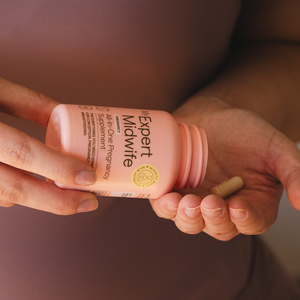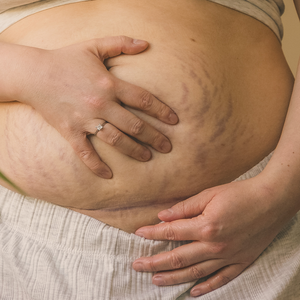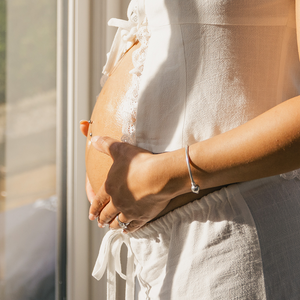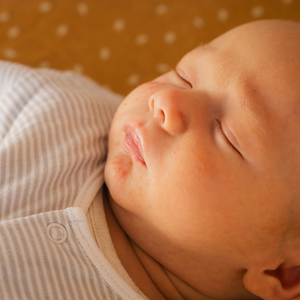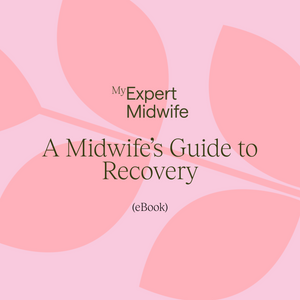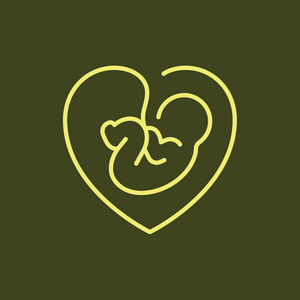Baby dribbling is a natural part of a developing baby’s life, but did you know it could lead to an irritating rash? Drool or dribble rash can look unsightly and make a baby feel upset, miserable and uncomfortable. Drool or dribble rash can usually be resolved quickly, but it can even be prevented with some simple steps.
In this article, you will find out:
- What dribble rash is.
- What causes it.
- How to treat and prevent dribble and drool rash to keep the baby happy and comfortable.
What is drool rash?
Drool rash is just another name for dribble rash. Dribble rash occurs when excess saliva runs uncontrollably from a baby or infant’s mouth, irritating the delicate skin and causing sore, inflamed, raw patches if left for prolonged periods. These raw patches may present with small red bumps on the skin.
Baby dribble contains digestive enzymes that break down the skin's protective layer, leaving it open to chafing, irritation, and damage.
If you notice a rash has developed around your baby’s mouth, or there is sore skin on their cheeks or neck from drooling a lot – most likely due to teething - then keeping the affected area clean and dry is important to help prevent it from worsening and potentially becoming infected.
The most common causes of dribble rash
Some babies dribble lots, making them more susceptible to dribble rash. But there are certain times when salivation increases.
In adults, these periods of increased salivation do not tend to cause a problem, as we can swallow it down or even spit it out. However, babies have an underdeveloped mouth, tongue and swallow techniques, all of which can lead to babies drooling a lot.
The most common causes of a baby’s excessive drooling leading to dribble rash include:
Teething
It is believed that when babies are teething, their salivary glands increase the saliva they produce as a natural pain reliever for sore gums. If they don’t swallow all that extra saliva, it comes out as dribble.
Babies also want to chew more, especially on teething rings and other firm toys, when they experience teething discomfort. Using pressure against their gums is another form of pain relief. Because their mouths tend to be open during chewing, much of the excess saliva produced will dribble out, which will likely lead to dribble rash.
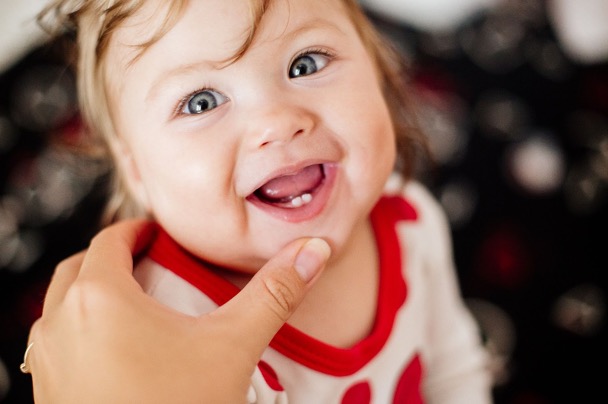
Mouth-centric
As babies develop their fine motor skills, their hand-eye-mouth coordination enables them to pick up things within reach, such as toys or food (or even you!), bring it to their mouth and chomp away. Babies use their mouths to explore the world and will put anything and everything in there to learn more about it. Putting things into their mouths will increase saliva production and dribble!
Illness
Some illnesses, such as colds or oral thrush, will cause babies to dribble more. Colds and respiratory illnesses may mean they need to breathe more through their mouths if their noses are blocked, increasing saliva and dribbling.
Oral thrush can also cause irritation and discomfort, and, as with teething, this may cause the salivary glands to produce increased amounts of saliva which, if not swallowed, will dribble out of their mouths.
Food
When babies start weaning from about six months of age, it can be messy! Their taste buds are developing, and they are discovering what tastes they like or dislike. They are getting used to moving bits of food around their mouths, and this increased activity of their teeth, gums, and tongue increases saliva production.
If you are concerned that your baby’s rash looks infected and/or they have other symptoms, such as a fever, we would advise you to speak to your doctor.
How to treat dribble rash
If your baby has developed a rash around their mouth or sore skin on their cheeks or neck from dribbling, keeping the area clean and dry is important to help prevent it from worsening and potentially becoming infected.
- Use warm water and a gentle wash that supports your baby’s skin integrity to keep their skin clean without disturbing your baby’s skin microbiome.
- Gently wipe your baby’s skin completely dry with a soft burp or muslin cloth, and do not rub, as this will irritate the skin further.
- Have a steady supply of clean, dry, and absorbent bibs or burp cloths to soak up excessive saliva and help prevent dribble rash on your baby’s neck and chest.
- Apply our unique Totally Immense Dribble Defence to calm and protect your baby’s sensitive skin and create a soothing barrier. Remember to apply a thin layer to your baby’s face, chin, neck, and chest before bed to protect your baby’s skin overnight. You can also use petroleum jelly as a barrier against excess saliva. However, you may want to use a fragrance-free moisturiser such as Mega Mild Moisture Milk to soothe and prevent dryness.
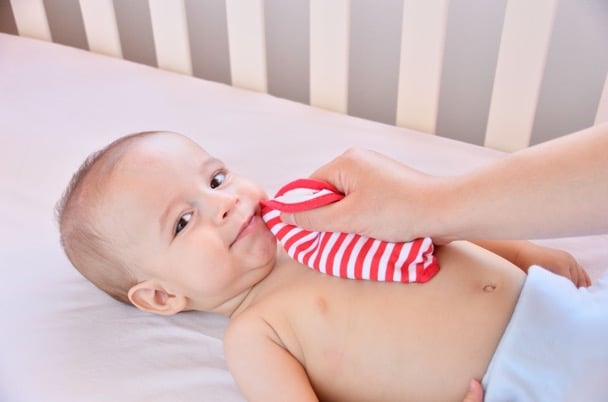
A note about allergens
Very rarely, your baby may be sensitive to certain foods, including cow’s milk. Allergens can increase how much your baby dribbles, and as those allergens come into contact with their skin, they can cause a rash.
To minimise this, introduce different foods individually when weaning your baby. If you are breastfeeding and suspect your baby may have a food sensitivity or allergy, seek advice from your healthcare provider. Look into eliminating different food groups from your diet one by one, and see if this makes a difference.
Preventing drool rash
Prevention is better than cure! And, when it comes to your baby, this is even more relevant - you will do anything you can to keep them happy. At My Expert Midwife, we have put together some tips to help prevent dribble rash.
- Use a soft, absorbent cloth or bib to soak up that excess saliva and wipe gently
- Use a fragrance-free gentle baby wash to clean away the dribble, as the enzymes in saliva irritate delicate baby skin
- Change your baby’s clothing when wet and soaked in saliva, as prolonged contact with a baby’s skin leads to rashes
- Apply a baby-specific dribble barrier to your baby’s chin, cheeks, neck and chest
- Avoid scented lotions, which can further irritate your baby’s skin, and petroleum jelly, which does not allow your baby’s skin to breathe
- Reduce the time your baby chews on teething rings and other toys – the more baby chews, the more their salivary glands will go into overdrive, and the more dribble will occur
Use a baby barrier product to prevent dribble rash
Whatever is causing your baby to dribble, the key to avoiding dribble rash is to keep their skin clean and dry and use a soothing and protecting fragrance-free barrier product specifically developed for sensitive baby skin. If treated quickly, dribble rash should not cause your baby any problems and can be dealt with easily with our simple tips.
Our team of Registered Midwives at My Expert Midwife have developed a range of natural skincare suitable from newborn onwards, fragrance-free, paediatrician approved, dermatologically tested and suitable for eczema-prone and sensitive skin. And our Mega Mild Cleansing Wash and Totally Immense Dribble Defence have been designed with problems such as dribble rash in mind. For more information about our range and to learn more about the importance of baby skincare, head over to our baby skincare range.
